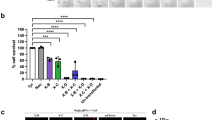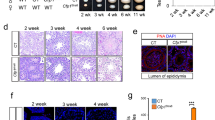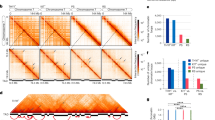Abstract
Sex chromosomes are subject to sex-specific selective evolutionary forces1,2. One model predicts that genes with sex-biased expression should be enriched on the X chromosome2,3,4,5. In agreement with Rice's hypothesis3, spermatogonial genes are over-represented on the X chromosome of mice6 and sex- and reproduction-related genes are over-represented on the human X chromosome7,8. Male-biased genes are under-represented on the X chromosome in worms and flies9,10,11, however. Here we show that mouse spermatogenesis genes are relatively under-represented on the X chromosome and female-biased genes are enriched on it. We used Spo11−/− mice blocked in spermatogenesis early in meiosis12 to evaluate the temporal pattern of gene expression in sperm development. Genes expressed before the Spo11 block are enriched on the X chromosome, whereas those expressed later in spermatogenesis are depleted. Inactivation of the X chromosome in male meiosis may be a universal driving force for X-chromosome demasculinization.
This is a preview of subscription content, access via your institution
Access options
Subscribe to this journal
Receive 12 print issues and online access
$259.00 per year
only $21.58 per issue
Buy this article
- Purchase on SpringerLink
- Instant access to full article PDF
Prices may be subject to local taxes which are calculated during checkout





Similar content being viewed by others
Accession codes
References
Charlesworth, B. The evolution of chromosomal sex determination. Novartis Found. Symp. 244, 207–219 (2002).
Vallender, E.J. & Lahn, B.T. How mammalian sex chromosomes acquired their peculiar gene content. Bioessays 26, 159–169 (2004).
Rice, W.R. Sex chromosomes and the evolution of sexual dimorphism. Evolution 38, 735–742 (1984).
Fisher, R.A. The evolution of dominance. Biol. Rev. 6, 345–368 (1931).
Rice, W.R. Sexually antagonistic genes: experimental evidence. Science 256, 1436–1439 (1992).
Wang, P.J., Mccarrey, J.R., Yang, F. & Page, D.C. An abundance of X-linked genes expressed in spermatogonia. Nat. Genet. 27, 422–426 (2001).
Saifi, G.M. & Chandra, H.S. An apparent excess of sex- and reproduction-related genes on the human X chromosome. Proc. R. Soc. Lond. B Biol. Sci. 266, 203–209 (1999).
Lercher, M.J., Urrutia, A.O. & Hurst, L.D. Evidence that the human X chromosome is enriched for male-specific but not female-specific genes. Mol. Biol. Evol. 20, 1113–1116 (2003).
Parisi, M. et al. Paucity of genes on the Drosophila X chromosome showing male-biased expression. Science 299, 697–700 (2003).
Reinke, V. et al. A global profile of germline gene expression in C. elegans. Mol. Cell 6, 605–616 (2000).
Ranz, J.M., Castillo-Davis, C.I., Meiklejohn, C.D. & Hartl, D.L. Sex-dependent gene expression and evolution of the Drosophila transcriptome. Science 300, 1742–1745 (2003).
Romanienko, P.J. & Camerini-Otero, R.D. The mouse Spo11 gene is required for meiotic chromosome synapsis. Mol. Cell 6, 975–987 (2000).
Huminiecki, L., Lloyd, A.T. & Wolfe, K.H. Congruence of tissue expression profiles from Gene Expression Atlas, SAGEmap and TissueInfo databases. BMC Genomics 4, 31 (2003).
Su, A.I. et al. Large-scale analysis of the human and mouse transcriptomes. Proc. Natl. Acad. Sci. USA 99, 4465–4470 (2002).
Bono, H. et al. Systematic expression profiling of the mouse transcriptome using RIKEN cDNA microarrays. Genome Res. 13, 1318–1323 (2003).
Fraser, L.R. & Dudley, K. New insights into the t-complex and control of sperm function. Bioessays 21, 304–312 (1999).
Eddy, E.M. Male germ cell gene expression. Recent Prog. Horm. Res. 57, 103–128 (2002).
Bellve, A.R. Purification, culture, and fractionation of spermatogenic cells. Methods Enzymol. 225, 84–113 (1993).
Solari, A.J. The behavior of the XY pair in mammals. Int. Rev. Cytol. 38, 273–317 (1974).
Mckee, B.D. & Handel, M.A. Sex chromosomes, recombination, and chromatin conformation. Chromosoma 102, 71–80 (1993).
Lifschytz, E. & Lindsley, D.L. The role of X-chromosome inactivation during spermatogenesis. Proc. Natl. Acad. Sci. USA 69, 182–186 (1972).
Baudat, F., Manova, K., Yuen, J.P., Jasin, M. & Keeney, S. Chromosome synapsis defects and sexually dimorphic meiotic progression in mice lacking Spo11. Mol. Cell 6, 989–998 (2000).
Schultz, N., Hamra, F.K. & Garbers, D.L. A multitude of genes expressed solely in meiotic or postmeiotic spermatogenic cells offers a myriad of contraceptive targets. Proc. Natl. Acad. Sci. USA 100, 12201–12206 (2003).
Schlecht, U. et al. Expression profiling of Mammalian male meiosis and gametogenesis identifies novel candidate genes for roles in the regulation of fertility. Mol. Biol. Cell 15, 1031–1043 (2004).
Goldstein, P. The synaptonemal complexes of Caenorhabditis elegans: pachytene karyotype analysis of male and hermaphrodite wild-type and him mutants. Chromosoma 86, 577–593 (1982).
Kelly, W.G. et al. X-chromosome silencing in the germline of C. elegans. Development 129, 479–492 (2002).
Huynh, K.D. & Lee, J.T. Inheritance of a pre-inactivated paternal X chromosome in early mouse embryos. Nature 426, 857–862 (2003).
Stekel, D.J., Git, Y. & Falciani, F. The comparison of gene expression from multiple cDNA libraries. Genome Res. 10, 2055–2061 (2000).
Tanaka, T.S. et al. Genome-wide expression profiling of mid-gestation placenta and embryo using a 15,000 mouse developmental cDNA microarray. Proc. Natl. Acad. Sci. USA 97, 9127–9132 (2000).
Tusher, V.G., Tibshirani, R. & Chu, G. Significance analysis of microarrays applied to the ionizing radiation response. Proc. Natl. Acad. Sci. USA 98, 5116–5121 (2001).
Acknowledgements
We thank P. Hsieh and B. Oliver for critically reading the manuscript, the members of the Camerini-Otero lab for discussions, L. Robinson and L. Moore for their help and M. Primig for communicating results before publication.
Author information
Authors and Affiliations
Corresponding author
Ethics declarations
Competing interests
The authors declare no competing financial interests.
Rights and permissions
About this article
Cite this article
Khil, P., Smirnova, N., Romanienko, P. et al. The mouse X chromosome is enriched for sex-biased genes not subject to selection by meiotic sex chromosome inactivation. Nat Genet 36, 642–646 (2004). https://doi.org/10.1038/ng1368
Received:
Accepted:
Published:
Issue date:
DOI: https://doi.org/10.1038/ng1368
This article is cited by
-
The X chromosome and male infertility
Human Genetics (2021)
-
Sex differences in the meiotic behavior of an XX sex chromosome pair in males and females of the mole vole Ellobius tancrei: turning an X into a Y chromosome?
Chromosoma (2021)
-
Dynamic sex chromosome expression in Drosophila male germ cells
Nature Communications (2021)
-
Male mice with large inversions or deletions of X-chromosome palindrome arms are fertile and express their associated genes during post-meiosis
Scientific Reports (2018)
-
Testis Transcriptome Modulation in Klinefelter Patients with Hypospermatogenesis
Scientific Reports (2017)



